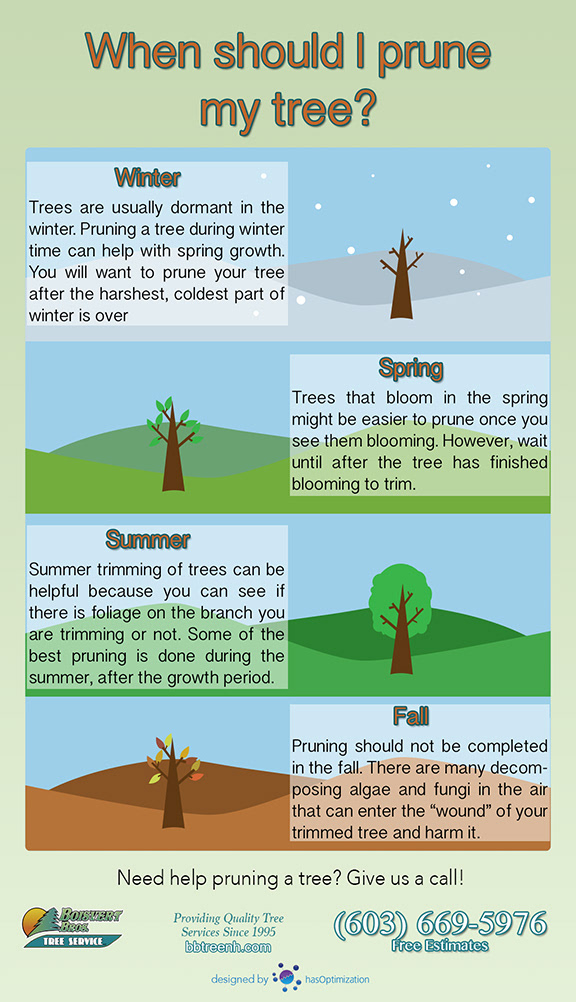Identifying The Requirement For Tree Elimination: An Overview For Homeowners
Identifying The Requirement For Tree Elimination: An Overview For Homeowners
Blog Article
Developed By-Mcmahon Lester
Trees add charm and value to residential or commercial property, but they can also pose a threat throughout extreme climate occasions. If a tree has actually stopped growing, is exhibiting noticeable fungal growth, or has a leaning trunk, it needs to be removed by a specialist to stay clear of residential or commercial property damage and injury.
To get more information, attend a property owner source fair co-hosted by HPD, the Facility for New York City Neighborhoods, and Brooklyn-based real estate companions this evening in Bedford-Stuyvesant. pro tree service will certainly include the House owner Handbook, a brand-new overview to help property owners navigate the obligations of owning a home.
1. Dead or Perishing Branches
Trees are an important part of your home's landscape, using color and beauty. They likewise offer shelter for wild animals and produce oxygen, yet also healthy and balanced trees can experience health issue that might require their removal. Dead or dying trees aren't simply unpleasant, they can be unsafe. Their branches might fall throughout a tornado, leading to pricey residential property damage and injuries.
When Read More Here start to pass away, it suggests that its structure is starting to break down. If the majority of its branches are dead, it is likely time to remove it.
Try to find a lack of new development, bark peeling, open wounds or cavities, fungi growing on the trunk or origins and a general look of degeneration in the whole canopy. These indicators of infection can show a significant trouble that will certainly need professional tree solutions to resolve.
2. Leaning Trunk
While it's normal for trees to lean once in a while due to phototropism, if a tree has a dangerous or severe lean that's not due to natural processes - it could be a sign that the tree needs to be gotten rid of. If the tree is favoring a power line, home, vehicle, play structure or any other location that could be hazardous to people if it drops, then getting in touch with a specialist tree service for elimination must be a leading concern.
It's also vital to look for any sudden changes in a tree's leaning as it can suggest damage to the origins or trunk that may cause falling. This is particularly true during thundercloud, because high winds and rain-soaked soil can trigger a lean to transform rapidly. Routine surveillance, specifically during and after tornados can help homeowners identify possible problems with their trees so they can call an arborist for a complete assessment.
3. Parasite Invasion
Some pest infestations, such as wood-boring bugs like emerald ash borer or sap-suckers like range bugs, are so severe that they can create a tree to pass away. The most effective method to prevent pest infestation is to monitor your trees regularly. Try to find areas, holes, or stainings in the fallen leaves and bark. Check out the trunk for cracks and indications of insect damages, such as passages or tracks.
If a tree comes to be also ravaged with pests, or is close to a home or power lines, an arborist might advise elimination. If a leaning tree establishes a brand-new, unsteady lean, an arborist will likely recommend removal also to ensure the security of people and building. If a damaged or dead tree continuously loses too much branches, it is an indication that it is time to get rid of the tree. If a tree remains to lose branches for an extensive period of time, it can bring about architectural problems and potential residential or commercial property damage.
4. Harmed Trunk
Trees are a stunning and integral part of our landscape, but they do need routine like keep them healthy and balanced and safe. If a tree is harmed irreparable it is likely time for it to find down.
Try to find indicators of damages to the trunk, including upright cracks, joints, dead branch stubs, visible wounds or open cavities and serious tree-rot. The visibility of fungis at the base of the trunk is one more cautioning indication. maintanice may suggest that the phloem and xylem (life-support cells) are jeopardized, enabling the spread of illness or a future failure.
Also, think about whether the tree has quit expanding. Healthy trees will have new development each year, which might show up as buds or branches growing and extending. If you do not see any type of new growth, it's an excellent idea to have an arborist review the tree and follow their referral for removal. A passing away or harmed tree can fall and cause building damage.